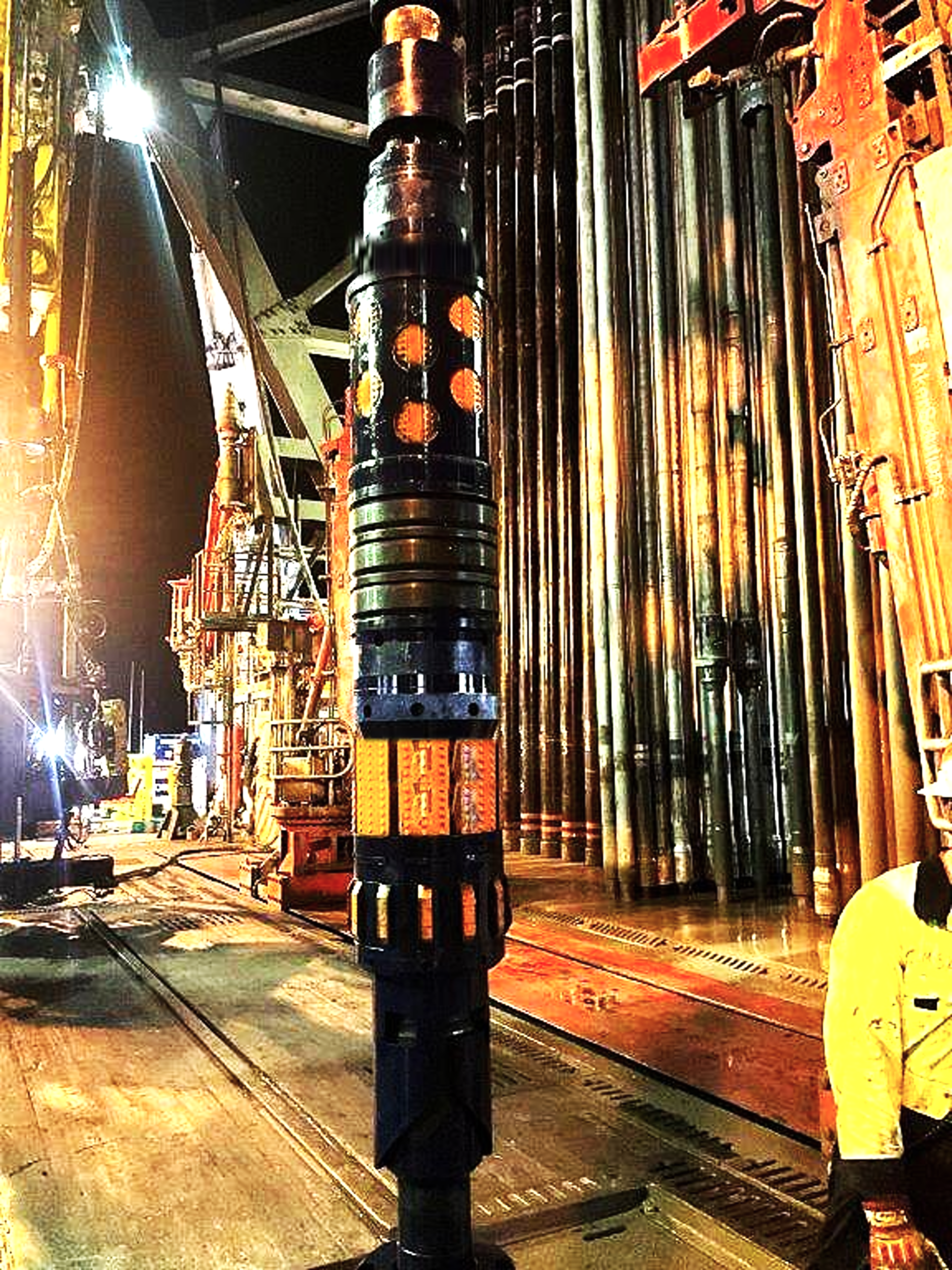
Maximizing Oilfield Success: A Deep Dive into the 14” NEXUS™ Packer System’s Capabilities and Benefits
Introduction
The right equipment can make the difference between a successful project and costly delays. The 14” NEXUS™ Packer System stands out as a high-performance tool designed to meet the rigorous demands of high-pressure environments. This case study will explore the capabilities and benefits of this advanced packer system, demonstrating why it is a reliable choice for oilfield professionals.
System Capabilities
The 14” NEXUS™ Packer System is engineered to excel in high-pressure scenarios, offering several key features that enhance its performance and reliability:
- Integral Bypass Feature: The packer includes a large internal bypass flow area, which significantly improves run speeds and circulation rates. This feature also helps to reduce surge and swap pressures, saving valuable rig time when tripping in and out of the wellbore or performing fluid displacements and negative testing applications.
- API 11D1 Qualified: The NEXUS™ Packer System is qualified to meet industry API and ISO standards, ensuring its reliability during well isolation operations. This qualification provides peace of mind that the equipment will perform as expected under high-pressure conditions.
- Increased Tensile and Pressure Ratings: The system is designed to handle combined loading scenarios without compromising performance, eliminating concerns about equipment capabilities during these critical operations.
- Maximum OD Clearance: The packer's design allows for quicker running speeds and reduces the risk of tagging, further enhancing operational efficiency and safety.
System Modularity
The NEXUS™ Packer System is not only powerful but also versatile, thanks to its modular design:
- Reduction in Rig Inventory: The plug-n-play technology of the NEXUS™ Packer System means that a single set of equipment can perform various service applications, reducing the need for multiple specialized tools and cutting down on costly equipment rental charges.
- Enhanced Operational Efficiencies: The system's design eliminates the need to remove additional pipe weight during suspension operations, streamlining the process and saving time.
- Reduced Assembly Pick-Up Lengths: The modular design also improves safety during lifting operations prior to tripping operations, making it easier and safer to handle the equipment.
- Rig-End Connections: By eliminating the need to make up components into assemblies, the system enhances the versatility of the equipment, allowing it to be used in a wider range of applications.
Field Report: Recent Application
Job Location: Deepwater Gulf of Mexico (GOM), USA
A major operator in the DW GOM required a high-pressure casing test, up to 9,300-psi, in their 14” 115# casing. OSP was contacted, due to their industry leading high pressure 14” NEXUS™ Packer System, to complete this test. After arriving on location and strapping our tools, we began tripping in hole (TIH) with the 14" NEXUS Packer.
Once reaching set depth, the packer was set per Field Operating Procedure (FOP) and we then moved into the testing phase. A successful 9,300-psi test was completed with 0-psi leak-off for 30-minutes. Once we confirmed a good test, we bled off and started pulling out of the hole (POOH). The NEXUS™ Packer surfaced successfully with no damage and no elastomer deformation.
Location Availability
The 14” NEXUS™ Packer System is available in multiple locations to support your operations globally. Whether you are operating in North America, Caribbean, South America, the Middle East, or other key oilfield regions, our distribution network ensures that you have access to the NEXUS™ Packer System wherever you need it. For specific location availability and to arrange for equipment delivery, please contact your local Oilfield Service Professionals representative.
Conclusion
The 14” NEXUS™ Packer System represents a significant advancement in oilfield technology, offering unmatched performance and versatility in high-pressure environments. Its integral bypass feature, API 11D1 qualification, increased tensile and pressure ratings, and maximum OD clearance make it an essential tool for any oilfield operation. Furthermore, its modular design reduces rig inventory, enhances operational efficiencies, and improves safety. For oilfield professionals looking to maximize their operational success, the NEXUS™ Packer System is the clear choice.
Eliminating Downtime in HPHT Wells: How OSP’s Modular Drillable Barriers Are Solving Costly Deepwater Challenges
Meeting the Demands of Modern Wells

When Downtime Becomes the Real Enemy
In deepwater drilling, operators often talk about pressure, temperature, and depth as the ultimate tests of a well. But ask any drilling manager where the real pain lies, and you’ll often hear a different answer: non-productive time (NPT).
Every hour of rig time offshore costs tens to hundreds of thousands of dollars. When conventional drillable barrier systems fail to hold under high-pressure, high-temperature (HPHT) conditions, the price is steep: sidetracks, delayed completions, and strained budgets.
This is the problem Oilfield Service Professionals (OSP) set out to solve. The result is a suite of modular, field-proven tools BarrierPro™, SqueezePro™, and MultiPro™ engineered specifically for HPHT environments. By addressing the core limitations of traditional systems, OSP is helping operators reclaim efficiency, reduce risk, and protect margins.
The Pain Points of Conventional Systems
Operators drilling into the Lower Tertiary Gulf of America (GoA) or similar HPHT environments face a consistent set of challenges:
- Unreliable conveyance through Tieback Receptacles (TBR): Conventional plugs often struggle to pass-through casing ID transitions, leading to poor isolation.
- Limited adaptability: Most systems are designed for narrow use cases, forcing operators to carry large inventories of specialized BHAs.
- High drill-out times: Ferrous-heavy designs increase flat time during plug removal.
- Premature setting risks: Complex geometries can trigger failures before plugs reach depth.
The operational consequences are significant: costly contingency sidetracks, delayed production, and increased HSE exposure.
The Solution: A Modular, Field-Tested Suite
BarrierPro™ – Reliability at Depth
BarrierPro™ is a cast-iron retainer/bridge plug rated to API 11D1-V3 for 15,000 psi differential pressure. Its enhanced slip-retention system eliminates the need for composite bands or slotted segments, enabling superior anchoring and performance in HPHT wells.
Key benefits:
- Dependable sealing in complex high pressure environments
- Reliable conveyance through TBR transitions.
- Qualified barrier at 15,000 psi differential.
- Seamless integration with OSP’s MultiPro™ setting platform.
SqueezePro™ – Cement Assurance Simplified
For cement remediation and annulus repair, SqueezePro™ offers semi- and fully-composite designs that deliver sealing integrity while dramatically reducing drill-out times.
Key benefits:
- Rapid drill-out, reducing rig time.
- Reliable isolation for cementing operations.
- Seamless integration with OSP’s MultiPro™ setting platform.
MultiPro™ – Deployment Versatility
The MultiPro™ system is a field-convertible setting platform. Compatible with mechanical, hydraulic, and wireline deployment, it reduces tool OD and length for easier clearance through tight geometries.
Key benefits:
- One system adaptable across casing sizes and grades.
- Inventory simplification.
- Improved annular clearance and faster drill-out efficiency.
Case Study 1: 31,000-ft Micro-Annulus Remediation
An operator in the Gulf of America faced severe micro-annulus issues in a 15,000 psi-rated well at 31,000 ft. Traditional tools had repeatedly failed to seal across TBR transitions.
OSP solution:
- Deployed BarrierPro™ with custom centralizer to ensure smooth passage through restrictions.
- Achieved a successful set at 31,000+ ft.
- Barrier passed API 11D1-V3 validation testing.
Results:
- Single-trip remediation completed successfully.
- NPT reduced significantly.
- Well integrity restored without sidetrack.
Case Study 2: Record-Setting 34,000-ft Barrier Installation
In another GoA project, an operator attempted to install a barrier at 34,000 ft—a record-setting depth with more than 850 premium casing connections. Competing tools had failed repeatedly.
OSP solution:
- Deployed BarrierPro™ Hydra-Set™ with CleanPro™ scraper.
- Combined scraper and barrier deployment in a single trip.
Results:
- First successful barrier set at 34,000 ft.
- Post-installation test exceeded 10,000 psi.
- No seal or setting failures.
- Operator avoided contingency sidetrack and costly delays.
The Value Delivered
The OSP Drillable Technology Suite provides measurable operator benefits:
- Reduced NPT: Faster deployment and drill-out save rig time.
- Risk Mitigation: Reliable sealing reduces likelihood of remedial work.
- Inventory Simplification: Modular system lowers logistical burden.
- Operational Flexibility: Multiple deployment options accommodate unpredictable downhole environments.
- Proven Reliability: Field data validates performance in the most extreme HPHT wells.
Turning Downtime into Uptime
The industry can’t afford the inefficiencies of legacy barrier systems. With field-proven tools like BarrierPro™, SqueezePro™, and MultiPro™, OSP delivers what operators need most: reliable performance in the harshest environments, fewer unplanned trips, and measurable reductions in NPT.
In short, OSP is transforming downtime into uptime, protecting both well integrity and operator economics in HPHT drilling.








